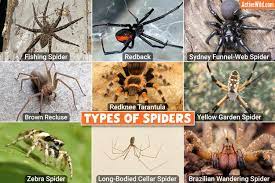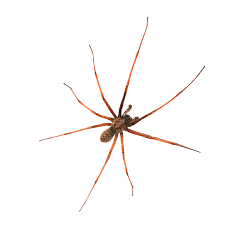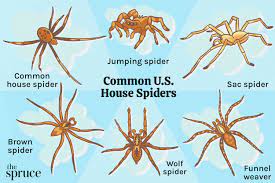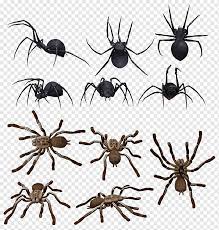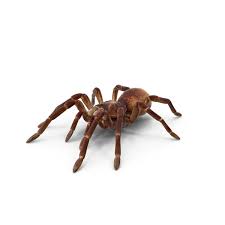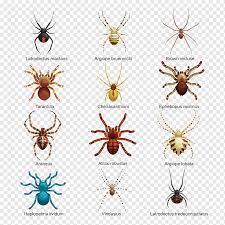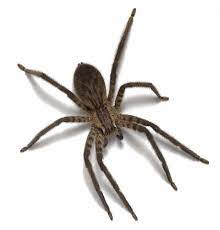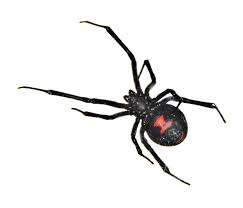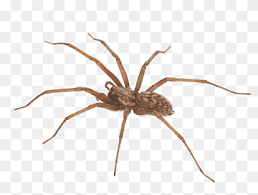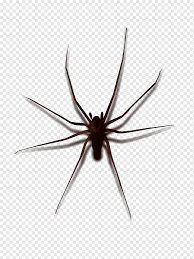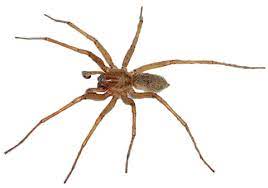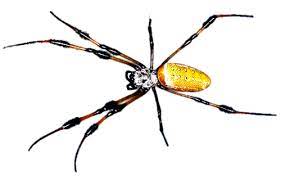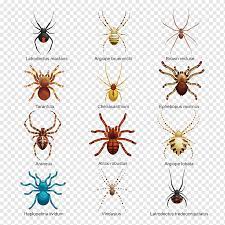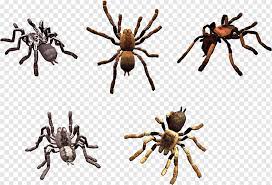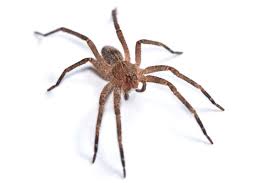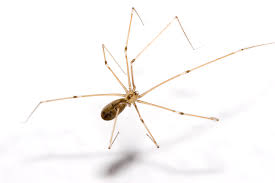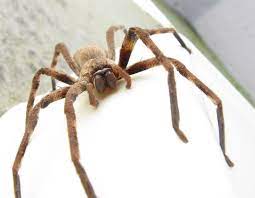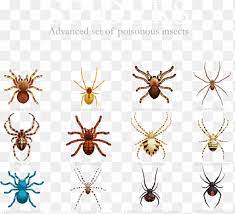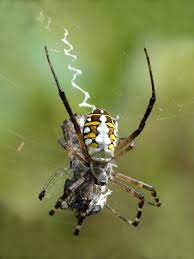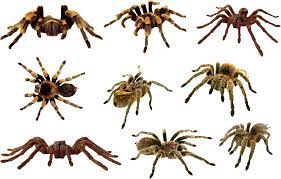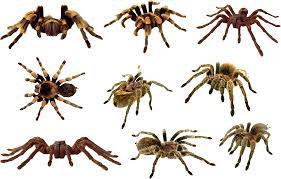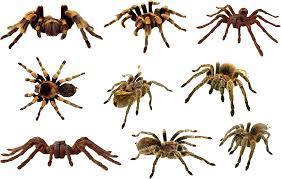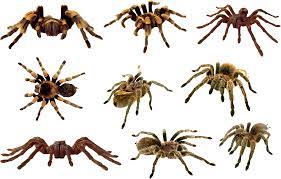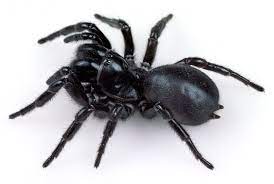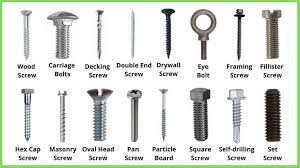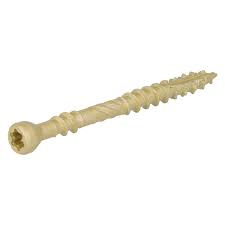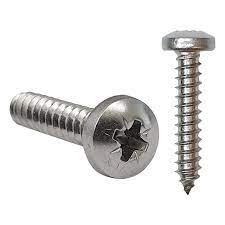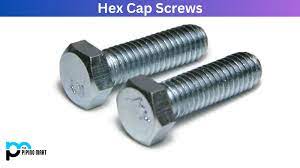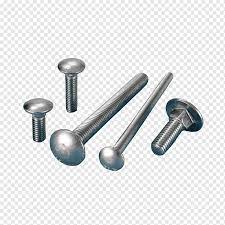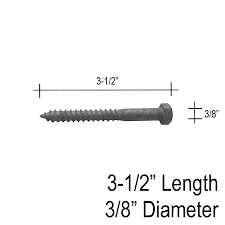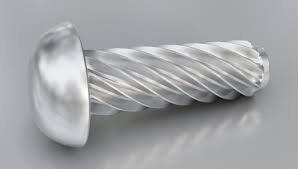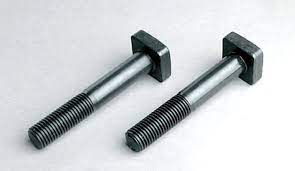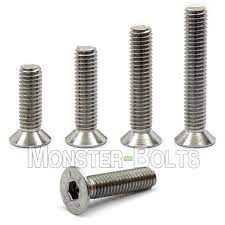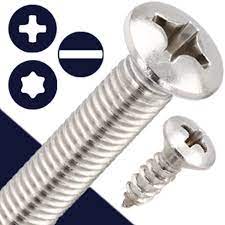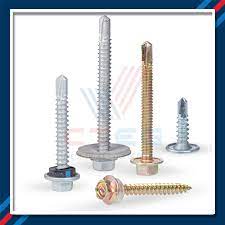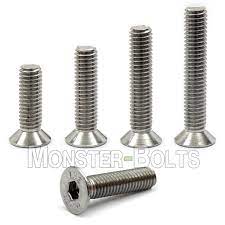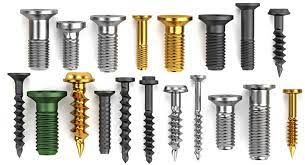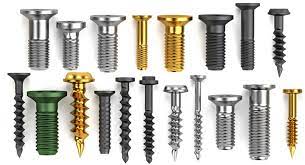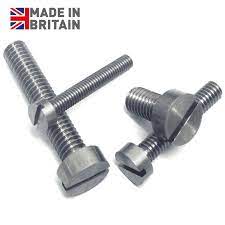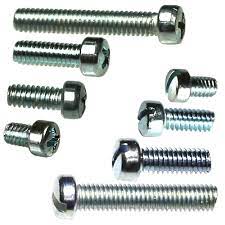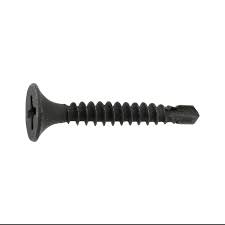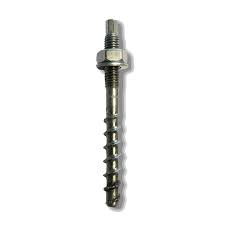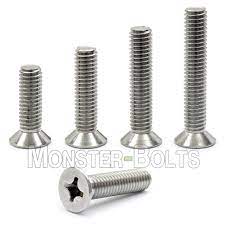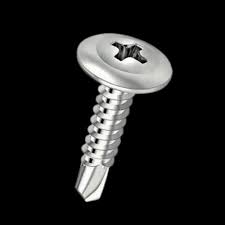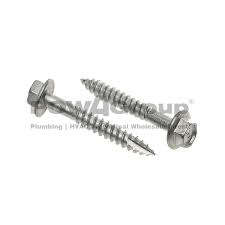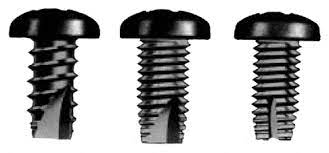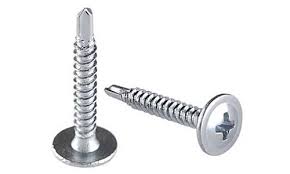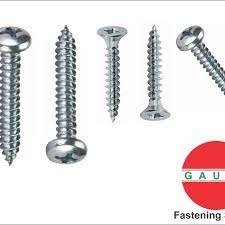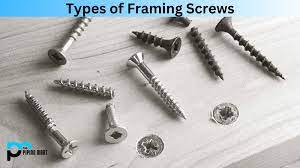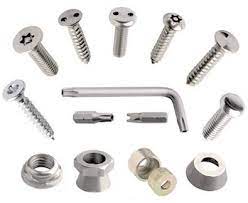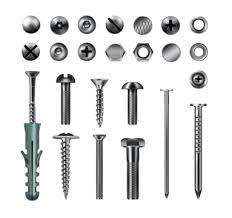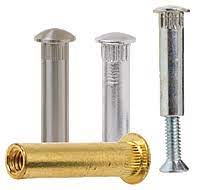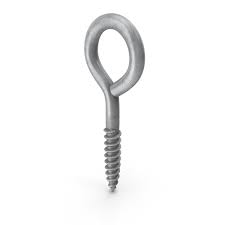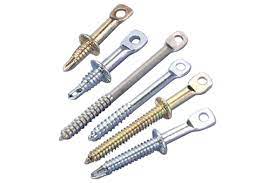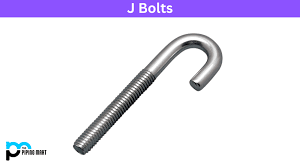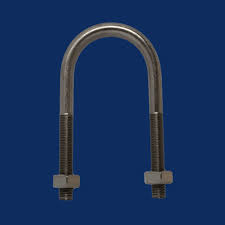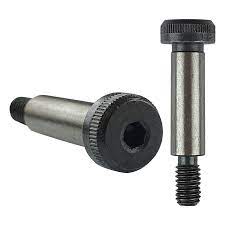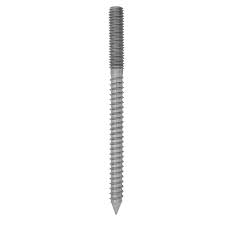Many people have a fear of spiders—arachnophobia. Let’s be real. A creepy-crawly with multiple eyes and legs that can appear out of nowhere is enough to give anyone the heebie-jeebies.
One way to battle the fear is to learn the differences between spiders. Many species are not harmful. But some contain venom that can be dangerous for humans.
We’re going to look at 23 types of spiders found in the garden or home so you can identify these species by sight.
What Are Spiders?
Spiders are an arthropod (invertebrate species with an exoskeleton, segmented body, and paired jointed legs) that require oxygen to survive.
These creatures are the largest species of arachnids (scorpions, ticks, and mites are also arachnids) and rank number seven for species diversity.
Spiders live on every continent except Antarctica, so they’re common around the world. In total, there are currently 48,200 different species of spiders.
Regardless of the species, all spiders have eight legs, two body parts (abdomen and cephalothorax), and spinnerets to produce silk webs.
Anatomy of a Spider
Spiders have unique anatomy. Most people know spiders as eight-legged insects (yes, all spiders have eight legs; no more, no less).
Other people know that spiders have a lot of eyes. How many? Three or four pairs. That’s six to eight eyes in total.
Now, some things many people don’t know about spider anatomy. Like, how about the fact that they have two separate body parts? There’s the cephalothorax (the upper half of the body) and the abdomen.
All spiders also have pedipalps (feelers), spinnerets (organs that allow spiders to spin silk), chelicera (mouth), and fangs, which connect to the mouth.
Types of Spiders
1. Brown Recluse Spider
Appearance:
Brown recluse spiders can vary from dark to light brown, which is similar to other spiders. However, you can identify a brown recluse from its less harmful relatives due to a dark brown violin on the back.
Habitat:
This spider got its name due to its reclusive nature. They prefer to make their homes in dry, warm, dark environments. These spiders do well outdoors, making their homes in woodpiles or other debris.
Some of these spiders may make it indoors, where you might spot them under furniture, hiding in closets, the attic, or crawl spaces, or near baseboards or window moldings where it’s dark and rarely disturbed. They also like to hide inside storage items you’ve put away and never use.
Location:
Brown recluse spiders are common in the Midwest United States (Ohio to Nebraska) and southern states from Texas over to Georgia.
Danger Level:
Brown recluse spiders do their best to avoid humans and only bite if threatened. However, their venom is poisonous to humans and will cause presenting symptoms.
If bit by a brown recluse, you may be aware at first until the wound starts to sting then turns into intense pain.
Symptoms of a brown recluse bite include difficulty sleeping, restlessness, and fever. In severe cases, the bite may turn into an ulcerating open sore and need medical care.
2. American House Spiders
Appearance:
American House Spiders can vary in color, although the majority are brownish-yellow and have an elongated abdomen.
Habitat:
This spider is common in the home, often hiding under furniture, closets, or window molding.
But there’s a higher chance you’d spot these spiders in your outdoor buildings, such as the garage, barn, or shed. They want to be where there’s a better chance of capturing food.
You may also notice these spiders spinning webs outside your home, with their favorite places being around the windows or under eaves near a prominent light source.
Location:
The American house spider is a common spider species found throughout the United States and Canada, and worldwide.
Danger Level:
Given that these spiders are a common sight in homes, it may ease your restless mind to learn that these spiders are not poisonous and rarely bite humans unless threatened.
If bitten, you do not need to seek medical treatment, and people rarely experience any symptoms. You may feel discomfort at the bite site, but it goes away shortly after occurring.
3. Tarantula
Appearance:
Tarantulas (all 850 species) are the world’s largest spiders, ranging in size from 4.5″ to 11″ long. This species can weigh between 1 and 3 ounces.
They have fierce downward-pointing fangs (which are powerful) and very hairy, prickly bodies. The color can vary from dull brown, black, striped, or even brightly colored (depending on the location).
Habitat:
Most tarantulas prefer to stay outdoors, living in dry, well-drained dirt. These species are ground-dwellers, meaning they live in the ground.
Some species in other parts of the world live in caves, cliffs, trees, or crops (pineapples and bananas are the most likely).
Location:
Tarantulas span the globe, preferring deserts, tropical and subtropical environments. The biggest populations are in South America, but they’re also common in the southwestern US.
Danger Level:
Tarantulas have a mild venom that is not threatening to people. Though it may hurt like hell if one of these giant hairy spiders bites you, you won’t die (unless it’s from the humiliation of screaming in terror).
4. Goliath Bird-Eater Spider
Appearance:
The Goliath Bird-Eater is a tarantula species that holds the record for being the largest in the world. If you haven’t guessed by the name Goliath, these giant spiders grow to sizes of 4.75″ (body) with legs up to 11″ long. Excuse me while I cringe!
Habitat:
Thankfully, for most of us, we’ll never encounter these horrifying species in the wild. They prefer deep-rainforest conditions where they live under roots and rocks.
Location:
If you live in or visit northern South America, you increase your chances of encountering these giant spiders. They live in the rainforests of northern Brazil, French Guiana, Guyana, Venezuela, and Suriname.
These spiders do not appear north of Central America due to the lack of rain forest climates. Not even the sultry, humid tropical climate of Florida or Louisiana is enough to lure these spiders into the US. I, for one, consider this a blessing.
Danger Level:
Despite the massive size of these behemoth spiders, they are not poisonous to humans. A bite from a Goliath bird-eater would feel like the sting from a wasp. You may feel sore for a few days, but you won’t die or need medical attention.
5. Camel Spider
Appearance:
Although not technically a spider, Camel spiders have eight legs and two long pedipalps, which help rip their prey into small pieces. The size of the pedipalps gives the impression of ten legs instead of eight.
They have a dark brown or tan color that helps them blend into the native desert environment. Tiny fine hairs cover the body, offering insulation.
These spiders can grow between three and six inches long and weigh up to two ounces. For comparison, three golf tees laid end to end equal the size of a 6-inch camel spider. A tennis ball held in your palm has a similar weight.
Habitat:
The camel spider prefers desert conditions and scrublands. They live in between rock crevices or under logs to stay cool during the day and hunt at night.
Location:
Camel spiders originated in the Middle East and have made it into the United States from soldiers returning from overseas.
You can also find some species in Mexico and the southern and western parts of the United States.
Danger Level:
Camel spiders often shy away from humans, although many may seem to be chasing a person; they are chasing your shadow.
However, these spiders are aggressive and will bite when they feel scared or threatened. Although they are not poisonous, their powerful chelicerae can bite through human flesh, which is severely painful. If left untreated, it can lead to infections.
6. Wolf Spider
Appearance:
Wolf Spiders have a few features that make them even creepier crawlies than just being a spider. For example, many of these spiders grow big and hairy (hence the name).
In addition to brown fur, these spiders also have a dark brown coloring, although some may have pale streaks. Their long legs are thin and spiny. They have three rows of eyes (eight eyes total) and can grow up to 2″ (not including legs).
Habitat:
These cringe-worthy arachnids tend to come into homes in search of prey. People who bring in firewood from outside have a higher chance of finding these spiders in their homes.
Once inside, wolf spiders stay near the floor, making webs under your furniture or on the lower parts of the walls.
Outdoors, wolf spiders thrive by hiding under landscape timbers, firewood piles, stones, leaves, and other resting debris. During the day, they rest inside sheltered areas, such as sheds and porches.
Location:
The Wolf spider is an abundant species throughout much of North America. Between the United States and Canada, there are over 100 different species of the Wolf Spider.
Danger Level:
Despite their intimidating look, wolf spiders are not aggressive and rarely bite humans unless provoked.
If you decide to pick one of these fuzzy spiders up and let it crawl on you, your furry friend may bite in self-defense. But the bite is harmless, as this species does not have venom.
7. Black Widow Spider
Appearance:
Black widows are a shiny, black spider with long, thin legs and an ovoid-shaped body. The easiest way to identify this type of arachnid is by the signature hourglass design on the abdomen’s bottom.
Although younger spiders may have an hourglass with an orange-yellow color, this hourglass is a bright red on mature females. Females grow up to 1.5″ long, while males are less than half that size.
Another way to distinguish between male and female is by color. Females have a shiny, black body; males are a lighter color with pink or red-spotted backs.
Habitat:
This spider species prefers dry, dark places where they won’t get disturbed. You’ll commonly find them in basements, garages, barns, rodent holes, dense vegetation, brush, decks, under stones, firewood piles, hollow stumps, outdoor toilets, and trash.
Location:
This spider species is a global traveler, found in the United States (south and west regions), Asia, southern Europe, Africa, Australia, and the majority of South America.
Danger Level:
Female black widows are highly aggressive and will bite to protect themselves. Male black widows are less likely to strike and are not as venomous.
This spider species is poisonous and has the notorious title of being the most venomous spider in North America. The venom of a black widow is 15 times more toxic than that of a rattlesnake.
Symptoms of a black widow bite start with a sharp pin prick that results in spreading pain within minutes. Other signs are:
- Nausea
- Muscle aches
- Severe back and abdomen pain
- Profuse sweating
- Difficulty breathing due to hypertension and paralysis of the diaphragm
The pain usually lasts between eight and twelve hours, while other symptoms may take several days to stop. Black widow bites should receive medical treatment. In most cases, the bite is not fatal, although death may occur in some situations.
8. Brown Widow Spider
Appearance:
Brown widows have a brown and tan mottled color with black accents. Females have an abdominal stripe along the dorsal and three diagonal lines on the flanks. Each strip has a square-ish black mark.
A signature trait of all widow spiders is the hourglass mark. However, the color is more orange than red with brown widows.
Habitat:
These spiders live in secluded areas around the house and along the branches of woody vegetation. They prefer empty containers (pots, mailboxes, buckets, recessed handles of garbage cans).
Brown widows often make webs under eaves, in the corners of garages and closets, and underneath outdoor furniture and railings.
Location:
Brown widow spiders have unclear origins. Some experts say it was first described in South America, while other experts say the species originated in Africa.
This species thrives in Florida, Hawaii, parts of Australia, Japan, Cyprus, South Africa, and some parts of the Caribbean Islands.
Until 2000, this spider only lived in Florida. It’s a common sight throughout the Gulf Coast states from Georgia to Texas, South Carolina, and southern California (San Diego, Los Angeles, and Orange counties).
Danger Level:
Brown widows are poisonous to humans, but their venom is not as potent as black widows. These spiders cause pain at the bite site that forms into a bright red mark.
In some people, severe complications can arise from a brown widow bite. Seek medical treatment for bites that you suspect came from this spider species.
9. Red Widow Spider
Appearance:
Red widow spiders are a threatened species due to the loss of habitats. These spiders have a black abdomen covered with red dots, outlined with yellow borders.
The thin legs, thorax, and head are an orange-red color.
Females grow up to a ½” diameter with ½” to 2″ long legs. Males grow to ⅓ to ½ the size of their female counterparts.
Habitat:
These spiders live in sand pine scrub habitats where there are shrubs such as palmettos to make their nests.
However, due to the destruction of these habitat types, there are becoming fewer places for these spiders to live.
Location:
The Red Widow spider is endemic to Florida but only in limited areas, such as Lake Wales Ridge and some central and southern parts of the state.
Danger Level:
As a widow family member, red widows have a poisonous bite that can be harmful to humans. The toxin of females is more potent than males.
No deaths have ever been reported due to a red widow bite, and there aren’t many records of bites that have occurred.
The poisonous neurotoxins can cause muscle spasms, high blood pressure, vomiting, and sweating. It’s essential to get medical treatment if there’s a suspected bite.
10. Hobo Spider
Appearance:
Hobo spiders are a light to medium brown color with lighter midline stripes and a single dark stripe down each side’s center. They have solid light brown legs without bands.
These spiders grow to sizes of 1″ to 1 ¾” in diameter, including legs. The body can be 5/16″ up to 9/16″ with females being slightly larger than males.
Habitat:
These spiders are poor climbers, so they tend to live inside crevices, holes, and cracks. They prefer moist, dark conditions like crawl spaces, basements, and window wells.
Location:
Before 1930, the hobo spider was a native species of Europe. However, now it’s a dominant species in six states in the United States.
It travels by hitching a ride on the undercarriage of vehicles, hence the name. They are common in the northwestern states of the US, primarily in the Pacific region.
Danger Level:
Hobo spiders are an aggressive breed that bites when intimidated or scared. Males are more likely to bite than females.
Symptoms of a bite from a hobo spider include localized mild pain and redness around the injury. In most cases, it’s not necessary to see a doctor for treatment.
11. Golden Silk Spider
Appearance:
Golden Silk spiders can be greenish-yellow or reddish yellow with white patches along the stomach. They also have striped brown or black feathery tuft legs.
These spiders grow up to 2″ as females or 1″ as males. Location can affect the spider’s growth.
Habitat:
These spiders build large golden webs along the edges of dense forests and in open woods. Their webs are sticky and a nuisance for hikers and hunters walking through the trees.
Location:
Golden Silk spiders are found in warm climates around the globe. The highest concentrations are in Madagascar and Australia.
They are found as far north as North Carolina and as far south as Texas in the US. They are common in the Gulf states, Florida, and the West Indies.
Some species have traveled as far as Argentina, South America, the South Pacific, and Southeast Asia.
Danger Level:
Golden Silk spiders may bite when held, but these spiders are not poisonous. A bite from this spider can produce slight pain less than a bee sting – and the area may turn red.
12. Jumping Spiders
Appearance:
Jumping spiders are the things of nightmares, with a small, compact black body and short legs, covered with brightly colored scales or prickly hair.
Untrained eyes often mistake the jumping spider with a black widow due to the body and size’s similar black coloring.
Habitat:
Jumping spiders are not picky about where they build their webs. They appear outside and indoors if they’re lucky enough to find a way inside.
Once in your house, you’ll most likely find them lurking in your windows and doors. They prefer sunlit areas to improve their vision and capture more prey.
Outside, these spiders like to live under boards and rocks. You may spot them climbing over your trees, bushes, decks, fences, or along the exterior walls of buildings.
Location:
These fuzzy, wicked-looking spiders are a common occurrence throughout all of the United States.
Danger Level:
For the most part, jumping spiders avoid human contact and run away if approached. However, if they feel threatened, some spiders may bite in self-defense.
Although slightly painful, a jumping spider bite is not poisonous or harmful to humans and would not need medical attention.
13. Red-Back Spider
Appearance:
Redback spiders are a relative of widow spiders, with the signature hourglass marking on the stomach that can be orange or red, depending on gender. Young spiders have more white markings on the abdomen.
Females are brown or black with a red or orange stripe on the top part of the abdomen. They have a body size similar to a large pea with slender legs.
Male Redbacks have a light brown body with white marks on the abdomen’s top with a pale signature hourglass marking.
Habitat:
These spiders don’t mind human companionship and often build their webs in sheltered areas like sheds or toilets and along rocks, junk-piles, inside logs, and shrubs.
They can survive in a variety of habitats, including forests and desert climates. And they’re drawn to human-made urban areas.
Location:
Redback spiders are native to Australia, hence the nickname Australian black widow. It’s believed to have originated in South Australia.
It’s present throughout Australia, New Zealand, the United Arab Emirates, the UK, Japan, and Southeast Asia.
Danger Level:
These spiders are responsible for over 2,000 hospitalized bites every year. But there have not been any deaths from this spider in over 50 years due to antivenom development.
These spiders have a potent venom that produces latrodectism, a name for presenting multiple symptoms related to being bit. Symptoms last 24 to 48 hours up to a few weeks.
Larger females cause worse symptoms than smaller or male species. In some cases, the bite may not contain as much venom.
Symptoms include severe pain that gets worse with time, localized sweating and swelling of the bite site, vomiting, nausea, chest or abdomen pain, headaches, increased blood pressure, and generalized sweating.
14. Brazilian Wandering Spider
Appearance:
Brazilian Wandering spiders, also named banana or armed spiders, are a giant and dangerous species. These monstrous arachnids can grow up to 2″ body size with 6″ long legs.
Color can vary, but all of these spiders have hairy bodies with a black spot on the stomach. Most Brazilian Wandering spiders are brown.
Habitat:
Brazilian Wandering spiders do not create webs. During the day, they hide in crevices or under logs in the forest. At night, they hunt and wander along the forest floor.
Location:
As the name implies, this spider is native to Brazil. There are eight different species. Other species live from Costa Rica to Argentina and throughout Latin America.
Stories have surfaced about giant Brazilian wandering spiders being transported in banana bunches to Europe and North America. But it’s believed these were harmless species of Cupiennius, which share similar features.
Danger Level:
The Brazilian Wandering spider is the most poisonous spider in the world. One bite can cause goosebumps, severe burning, and sweating.
Additional symptoms include altered blood pressure (high or low), hypothermia, nausea, blurred vision, convulsions, and vertigo.
15. Long-Bodied Cellar Spiders (Daddy-Long-Legs)
Appearance:
Perhaps one of the most well-known spiders, the daddy-long-legs has signature traits that make it easily identifiable.
These large spiders have long, skinny legs (as the name implies), with a small pale yellow or light brown body.
Habitat:
As the name implies, you can often find cellar spiders in basements, crawl spaces, and cellars. These spiders prefer interior areas where there’s a lot of moisture and humidity.
Other common areas are in the corners of barns, sheds, warehouses, garages, closets, cabinets (especially around the kitchen or bathroom sink), and the eaves, ceilings, or windows.
Location:
You can find cellar spiders anywhere in Canada or the United States. There are over twenty different cellar spider species throughout both countries.
Danger Level:
There have been no documented cases of this spider ever biting a human. Many people like to play with these spiders and often relocate them instead of killing them. Unlike other spider species, which get the shoe if they show their presence.
One myth about the daddy-long-legs spider is that it is the most poisonous spider globally, but the fangs are too small to penetrate human skin. Recent research busts this myth, stating there is no scientific evidence of these spiders’ toxicity to humans.
16. Huntsman Spiders
Appearance:
Huntsman spiders are large hairy species, growing up to 1″ (body) and 3″ to 5″ legs. They have a brown, flat body with little pattern.
However, the species Giant Huntsman spider can have a leg span of almost 12″, giving this species the title of largest spider (by diameter) in the world. Some can grow to have a span rivaling a dinner plate.
Females have a larger abdomen, while males have longer legs. Either sex has a wide marginal band around the carapace (cream – males, tan – females). All of the legs have black spots.
Habitat:
These spiders are a common site in barns, sheds, garages, and inside the house. In some areas, they may come into greenhouses.
But they cannot stand cold weather, which makes them rarely seen outside, especially in cold months. Outdoors, they live under rocks, foliage, loose tree bark, and in crevices. When it’s cold out, these spiders are coming inside, even if your house is a spider-free zone.
Location:
The Huntsman spider may have originated in Asia, but it’s now common in Africa, Australia, South America, and some of the United States – coastal, tropical, and subtropics.
There are over 100 species of Huntsman spiders in Australia; it’s believed there are more not yet discovered.
States where these spiders live, include California, Texas, Florida, South Carolina, and Georgia.
Danger Level:
The bite of a Huntsman spider is painful, and swelling is common around the injury. Mild nausea and headaches are also possible. No medical treatment is necessary for most bites.
17. White Spiders
Appearance:
White spiders, otherwise known as goldenrod crab, flower, or crab spiders, have a light coloring that can be white (female) or a faded yellow or green (male).
These spiders blend well into nature, making them difficult to spot. Females can change their color to match their surroundings. White spiders resemble crabs due to their legs growing out to the sides instead of under them, hence their nickname.
Females have two bright red dots on their stomach, which may blend in with the lines or appear not there at all. They can grow from 7 to 10mm, with the front two legs longer than the rest.
Male spiders have a white or green belly that sometimes has brown stripes. These spiders are often smaller than the females.
The eyes of a White spider are unique to their species. They have two rows, with the top row being straighter and larger. The eyes have a wide bottom and a narrow top.
Habitat:
White spiders do best in temperate climates and are partial to forest biomes. Locations where plants like milkweed, white fleabane, white flower, trillium, and goldenrod grow, are sure to have these spiders nearby.
Location:
The White spider is one of the most common spider species in the Northern hemisphere and lives in almost all countries above the Tropic of Cancer. You can only spot these spiders in Europe or North America.
Danger Level:
White spiders are harmless to humans, as their fangs are too small to penetrate a person’s skin. They do contain venom but not enough to harm large animals, let alone humans.
18. Orb-Weaver Spiders
Appearance:
Most species of Orb-weavers have bright colors with a large abdomen and spiny or hairy legs. Most have a gray or reddish-brown coloring.
Some species may have a leaf pattern on their triangular belly. There may be a brown or white dorsal stripe (sometimes with a white edge).
But with over 2,800 different species classified as orb-weaver, appearance, size, and color can vary.
Habitat:
Orb-weavers are apt to set up their webs anywhere there’s a structure where they can spread their web out to catch flying insects—openings in trees or shrubs, light fixtures, or even tall grass.
These spiders create a large web (up to three feet in diameter) at night to catch prey, then take it down before dawn. This species’ unique feature is they weave vertical orb (circular) webs that resemble Halloween decorations. Many people compare them to wheel spokes.
Location:
Orb-weaver spiders are an abundant species found in North America, including all continental US, Hawaii, Alaska, and Canada.
Danger Level:
Bites from an Orb-weaver spider are rare, and they never attack unless provoked or threatened. If you’re attempting to pick one up, don’t be surprised if they bite you.
Being bit by this spider will feel similar to a bee sting and rarely presents any symptoms other than soreness around the injury. Numbness, swelling, dizziness, and nausea are rare but potential side effects.
19. Sac Spiders
Appearance:
Sac spiders are a pale yellow, cream-white, or brownish-red color with distinct black markings around the mouth. They are a small species, growing less than ¼” long.
Females of the c. mildei species can grow up to ⅜” while males grow between 3/16″ and 5/16″. C. inclusum females grow between 3/16″ and ⅜” and males get between ⅛” and 5/16″ long. A darker colored stripe runs down the abdomen.
Habitat:
There are two different species of sac spiders in North America. Cheiracanthium inclusum is usually outdoors, while cheiracanthium mildei are more common indoors.
These spiders are not afraid of humans, and there are reports of people being bit by these spiders as they climb up a couch or into a person’s bed. You may notice silken sacs in the corners of your baseboards, ceilings, or underneath and behind furniture.
Outdoors, they form these sacs underneath logs or stones, around door frames, under window sills, and along soffits. They also hide under loose tree bark.
Location:
Historically, it’s believed that c. mildei originated in Europe, but it’s also common in most North America, including the northern states. C. inclusum, on the other hand, lives in the southern states but isn’t seen in most northern states in the US.
Danger Level:
Sac spiders contain a cytotoxic venom that’s extremely harmful to humans. Spider bites from this species should seek immediate medical attention and be treated as an open wound.
Failure to treat a sac spider bite can cause septic or necrotic tissue, leaving scarring and damage. Although no deaths have been reported from a sac spider bite, it often requires a round of Prophylactic antibiotics to prevent infection and permanent damage.
C. Inclusum spiders account for the largest number of spider bites to humans in the US. These spiders often bite a person multiple times, but their venom is not as severe.
These bite wounds turn into a hard, red area with a 1″ up to several inch diameter. Then it forms a white pustule that requires proper cleaning and disinfecting.
20. Grass Spider
Appearance:
As with most spiders, female grass spiders get bigger than males, averaging a length of 10 to 20mm, while males only reach 9 to 18mm.
These spiders have a brownish-yellow carapace with dual longitudinal stripes. They have a darker colored abdomen than the rest of their body. They are usually brown, but some species may be beige, ivory, black, gray, or a blend.
Grass spiders have eight eyes, in rows of three, two on the top and bottom, and four in the middle.
Their appearance resembles their relatives – hobo or the domestic house spider. They are also commonly mistaken for wolf spiders.
Habitat:
If the name hasn’t already said it all, grass spiders prefer to stay outdoors, building their nests in tall grass and shrubs.
Location:
The grass spider is a common species found all across the United States, including Hawaii and Alaska, Mexico, and Canada.
Danger Level:
Grass spiders are more reclusive, preferring to avoid human interactions when possible. But when scared, they will bite. However, they have small fangs, which have trouble piercing human skin.
Babies, the elderly, and people with thin skin are in danger of grass spider bites. These spiders contain harmful venom, and if it does manage to get into the skin, it can cause necrotic lesions and infections.
21. Ground Spiders
Appearance:
The name ground spider can refer to many spider species, including the Parson spider, which is the most common.
Most ground spiders are grayish-brown or red and may have striped marks or solid coloring. They are small in size, rarely above ½” in length.
Habitat:
Ground spiders prefer making homes under logs, mulch piles, leaves, heavy ground covering (ivy), rocks, and other ground-level objects. Unless they are hunting, these spiders do not leave their homes once established.
If they come indoors, they hide in quiet, dark spaces during the day and may venture out after dark to hunt. You may spot them under appliances and furniture or moving along baseboards.
Location:
Ground spiders are common worldwide and are abundant in Mexico, Canada, and all 50 states of the US.
Danger Level:
Ground spiders are not poisonous and do not contain any venom. Some species may bite when cornered but will not need medical treatment.
22. Crab Spiders
Appearance:
There are over 2,000 species of spiders that classify as crab spiders. For this reason, the color can vary from dark brown, black, or light gray, allowing them to blend into the ground.
Some species may be bright or light-colored or even able to change shades. Females are larger than males.
Crab spiders move sideways with a length of 2 to 11mm. They have a flat body and thick legs, with the front two pairs being longer than the back two pairs. All eight small eyes are the same size.
Habitat:
This species is common in landscaping and home gardens. They hunt along leaf litter, soil surface, mulch, plant leaves, flowers, trees, and shrubs.
Location:
With so many different crab spiders species, it’s easy to understand why this species is found worldwide on all continents.
Danger Level:
Crab spiders contain venom, but their mouths are too small to puncture human skin, so bites are rare. If a bite occurs, there may be mild localized pain that quickly goes away.
23. Funnel-Web Spiders
Appearance:
There are three different classifications of funnel-web spiders. In the agelenidae family, there are almost 1,200 species globally, with 100 native to North America. These spiders are gray or brown, up to ¾” long, with eight eyes in two rows, spotted backs, and banded legs.
Hexathelidae species are dangerous to humans and include the northern tree funnel and the Sydney funnel species. These species grow 1″ to 2″ long and are brown or black, and have sharp fangs and extended spinnerets. Light hair grows along the shiny carapace.
Dipluridae species are considered funnel-web tarantulas. Spiders in this family can range from 3mm to 15mm (½”).
Habitat:
Funnel-web spiders enjoy temperate grassland regions, and some prefer tropical conditions. All species of funnel weavers stay low to the ground and form funnel-shaped webs.
Location:
Spiders in the Dipluridae family are native to tropical regions, preferring South and Central America. But they also occur in Central Asia, Australia, and Africa.
Those in the agelenidae family live throughout North America, including all 50 states in the US (Alaska and Hawaii) and Canada.
Dipluridae species are native to Australia.
Danger Level:
Some species of funnel-web spiders are not harmful to humans. A bite results in mild pain
but no lasting issues. Spiders of the Hexathelidae species are the opposite. These are dangerous to humans, and many of these are on the list of the deadliest spiders globally.
Types of Spiders FAQ
Are most spiders harmless?
The majority of spiders are not harmful to humans and are beneficial for getting rid of bugs and other common pests.
How many types of spiders do we have?
There are over 4,000 different species of spiders throughout the world. Over 3,400 of these are in North America. Out of these, only three are poisonous. Others can cause irritation but nothing serious.
How can you tell a poisonous spider?
Poisonous spiders have unique markings and colors that help distinguish between safe and unsafe.
In the US, three signature markings you need to watch for are:
- hourglass shapes on the abdomen (Black widow)
- a brown violin mark on the back (brown recluse)
- yellow markings on the belly (hobo spider).
Do spiders have genders?
Spiders can be male or female. Determining a spider’s gender can be done by studying the size and color. Female spiders are almost always bigger than males.
Conclusion
We hope you enjoyed this detailed guide on the 25 most common spiders found in gardens and homes. Now that you know the differences between all these different species, you’re better prepared to face your fears and maybe save the life of a harmless spider friend or two.


A cream color can go with any darker color, including charcoal, navy, and green. Adding striped cream pillows lightens rich browns’ tone, while a thick textured cream wool pillow adds texture. A patterned green pillow adds a pop of color, while a beige and navy blue pinstripe lumbar brings in a hint of a different color.
Small prints like an Aztec design can give your couch dimension and a little pop of color that doesn’t dominate the space. Patterns are a great way to draw the eye and give your couch a unique texture and style.


If you want a soft, comfortable yet classy throw pillow, a velvet type might be your pick. You can choose bold colors to pair with rich, dark browns or more neutral colors for lighter browns or those with gray hues.
Brown is an earthy tone, which complements well with other earthy hues. If you enjoy the rich tones of autumn, consider adding pillows of similar colors to your brown couch. Shades like deep red, orange, other brown shades, and gray give dramatic pops of contrast.
